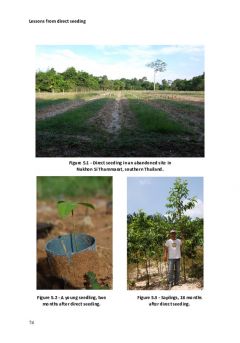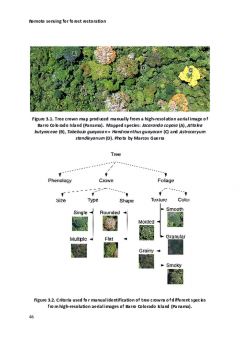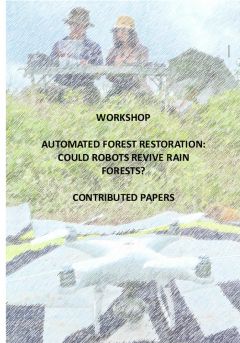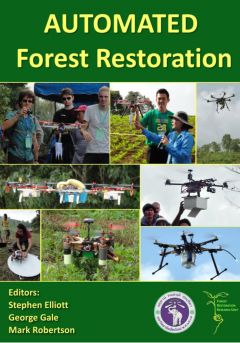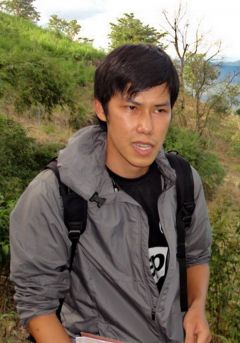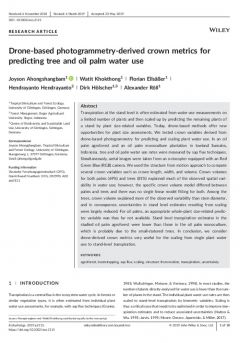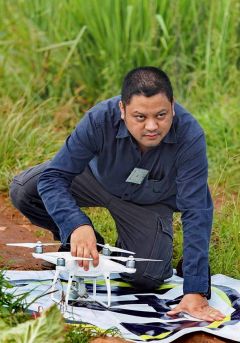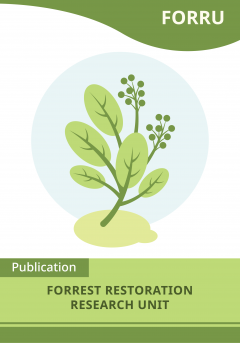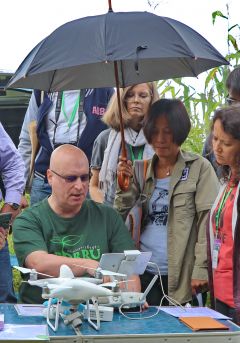Publications
21: Developing aerial seeding by UAVs: lessons from direct seeding
ABSTRACT: Direct seeding means sowing the seeds of forest tree species directly into the substrate of restoration sites. It is cheaper than conventional tree planting, but seed predation is high...
22: Applications of remote sensing for tropical forest restoration: challenges and opportunities
ABSTRACT: The tremendous physical and material efforts, required to accurately assess forest degradation and to plan and monitor vegetation recovery using conventional ground surveys, often limit...
23: Forest restoration: concepts and the potential for its automation
ABSTRACT: In 2014, the UN New York Climate Summit set a goal to restore forest to 350 million hectares of degraded land by 2030, to counter climate change. Conventional tree-planting with human...
24: Automated Forest Restoration: Could Robots Revive Rain Forests?
Now available as printed book. Please click on CONTACT US tab if you would like one. The proceedings of a brainstorming workshop - "Automated Forest Restoration; Could Robots Revive Rain...
25: Seed storage behaviour of native forest tree species of northern Thailand
ABSTRACT: Storage of native forest tree seeds is essential for the development of seed-based forest restoration methods, such as direct or aerial seeding and for increasing representation of...
26: Drone‐based photogrammetry‐derived crown metrics for predicting tree and oil palm water use
ABSTRACT: Transpiration at the stand level is often estimated from water use measurements on a limited number of plants and then scaled up by predicting the remaining plants of a stand by plant...
27: Drone-based assessment of canopy cover for analyzing tree mortality in an oil palm agroforest.
ABSTRACT: Oil palm monocultures are highly productive, but there are widespread negative impacts on biodiversity and ecosystem functions. Some of these negative impacts might be mitigated by...
28: Identifying and Locating Trees of Framework Species Using Photography from an Unmanned Aerial Vehicle (UAV)
ABSTRACT: The need to locate and identify potential seed trees has become crucial, if we are to meet ambitious global reforestation targets of UN New York Declaration on Forests, 2014, which aims...
29: The ecology and technology of accelerating forest ecosystem recovery
Whilst the science of restoration has improved greatly over recent years, the technologies for implementing it remain primitive. Nearly all accessible land is already used for agriculture. So,...
30: The potential for automating assisted natural regeneration of tropical forest ecosystems
ABSTRACT: Assisted (or accelerated) natural regeneration (ANR) will play an important role in meeting the UN target to restore forest to 350 million hectares of degraded land, by 2030. However,...
-
- 41: 30
- 12: 8
- 10: 5
- 34: 5
- 36: 4
- 14: 3
- 11: 2
- 33: 2
- 37: 2
- 13: 1
- 39: 1
-
- 42: 16
- 28: 8
- 18: 3
- 46: 2
- 47: 1
-
- 21: 19
- 48: 10
- 50: 2

